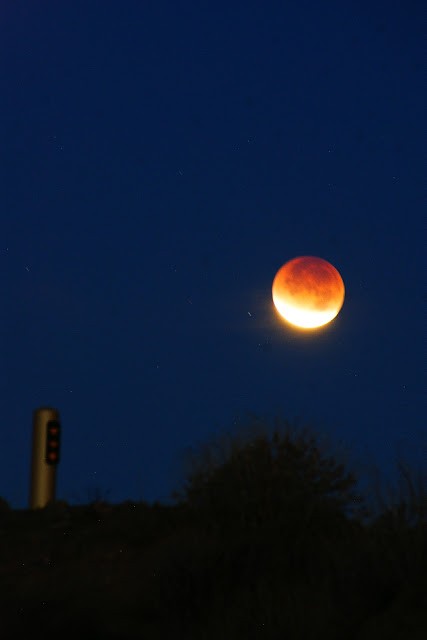Sidra Shahid
Saturday, December 10, 2011
Friday, September 9, 2011
Sceloporus magister; Reptile native to Sonoran Desert in the US.
My cats helped me discover this beautiful small family of Desert Spiny Lizard. Every morning, my cats would just stare outside into the patio as if there was something weird going on. First, I thought they just look at birds, but then this one day I decided to peek through the mirror too. And to my surprise, I saw a beautifully colored lizard standing right in front of an old refrigerator in my patio, bravely staring at my face. I sat down right there to observe it for a while. After some time I saw another one come out. This one was smaller and not vibrantly colored. I assumed it was a female lizard. I grabbed my camera and started clicking through the mirror. Later on, I looked their kind up on the internet. I found two species of lizard that matched the exact description of the ones I was looking at. Yellow-backed spiny lizard and Desert spiny lizard. I spent quite some time deciding which one this exactly is. Researched a bit more and concluded that this is the Desert Spiny lizard. A few days back I found two juvenile lizards running around the patio trying to look for food maybe? They were super active and were being guarded by their mother, while they looked for food. The male lizard has not come out since a few days or maybe it just left...
Male Sceloporus magister
Female Sceloporus magister
Wednesday, August 10, 2011
Thursday, May 19, 2011
Astrophotography
The sunlight takes about 8 minutes to reach the earth. The starlight takes years to reach us. Our closest star is 4.3 light-years away from us. Meaning, if we travel towards it at the speed of light, it will take us 4.3 years to get to it. This means that what we see in the night sky is the past, whats happening with the stars right now, will be visible to us years later. This is the main reason why the night sky and astronomy attracts me so much. Also, its mystery, its depth, its precision and order makes you believe that there is indeed a supernatural being controlling it and maintaining its delicate balance. It makes me feel the existence of God.
Astrophotography is capturing images of the night sky. Deep sky astrophotography includes distant galaxies and nebulae. So far I haven't done that but here are some of my general astrophotography shots.
Orion, the Hunter (Flagstaff, AZ)
Orion, a prominent constellation in the night sky, can easily be seen each year from late fall to winter in the Northern Hemisphere.
Ursa Major, The Big Dipper (Flagstaff, AZ)
Ursa Major is one of the most easily recognizable groups of stars in the sky. Being circumpolar (never setting below the horizon) it is visible throughout the year in the Northern Hemisphere.
Big Dipper Trails (Flagstaff, AZ)
As Earth spins on its axis, the stars trail around the North and South Celestial Poles. The Big Dipper trails around the North Celestial Pole.
Young Moon (Phoenix, AZ)
Meteor (Phoenix, AZ)
This meteor was captured during the Geminid meteor shower 2010. I got lucky here, since the meteor appeared within the set field of view.
Polaris (Phoenix, AZ)
Polaris is the current North Star since it lies very close to the North Celestial Pole around which the Earth spins. Polaris will not always be the North or Pole star. Over the course of years due to the wobbling of Earth, the axis of rotation will point towards other stars around its circular pattern.
Polaris is between the two red marks in this image.
The bluish white fuzz towards the left of this image is the stardust from our own Milky Way galaxy's arm that runs across the sky. It was not visible to naked eye but appeared in this long exposure.
Milky Way Band
The arm of our Milky Way galaxy is visible as a broad band of faint light in the sky. It is visible to naked eye only form dark places with minimum light pollution. However, cameras with long exposures can capture the stardust from the suburbs. Here's a shot from my backyard on a moonless night.
Almost Full Moon
Waning Crescent Moon and Jupiter
Weather
My love for sunlight, clouds, snow, rain, rainbows, lightning and thunderstorms never dies. Every time there's a storm there is something new to capture. During thunderstorms I spend hours trying to capture good pictures of lightning or weird cloud formations. From cloud bursts to raindrops on leaves, from lightning to rainbows and back to sunlight - I like to capture it all! Scattered thunderstorms are great. They give me the opportunity to capture them from a distance. However, hailstorms are scary!
Small storm from a distance (Phoenix, AZ)
Lightning striking somewhere down the street, during a severe lightning storm.
View from my window after a storm
Through the wet window
Raindrops
Almost freezing droplets on leaves
Winter in Arizona
Flagstaff, AZ
Summer in Arizona (Sedona, AZ)
Double Rainbow
Around me
Marrah
One of my two cats that were adopted from a pet store. She is very friendly and loving. I used to hate cats until my siblings got these. Now I love them so much that I often find myself praying to God that they stay with me forever!
Chapel at the Farm (Gilbert, AZ)
A small wedding venue made in an original farm with a few upgrades to make it a perfect for weddings. My first ever photography class and session held there. Here is a shot from that class.
Subscribe to:
Comments (Atom)























































